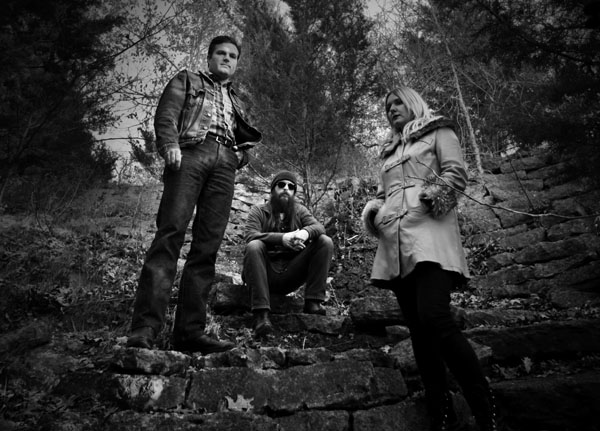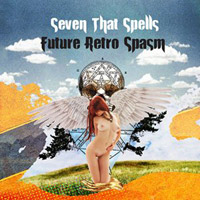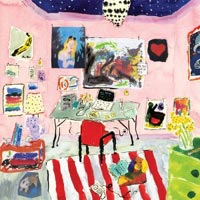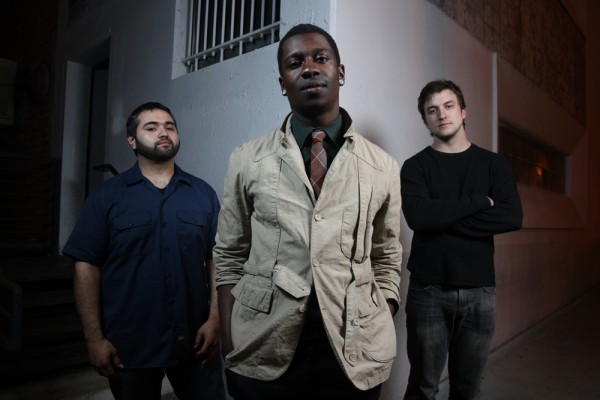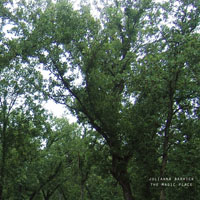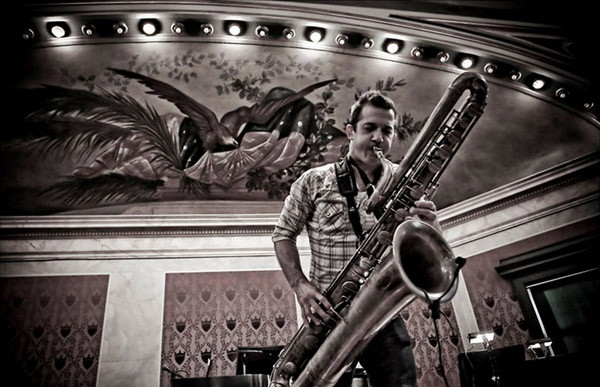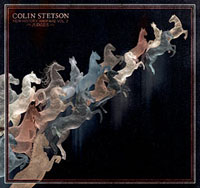 Rachel Goodrich: Rachel Goodrich (self-released, 2/21/11)
Rachel Goodrich: Rachel Goodrich (self-released, 2/21/11)
Rachel Goodrich: “Na Na Na”
[audio:https://alarm-magazine.com/wp-content/uploads/2011/02/Rachel-Goodrich-02-Na-Na-Na.mp3|titles=Rachel Goodrich: “Na Na Na”]About two-thirds through her self-titled sophomore album, Rachel Goodrich devotes an entire track — 38 seconds to be exact — to boasting from the perspective of a thugged-out prehistoric reptile. “I was hanging out with my sister, and I had just got this T-shirt, and it had a dinosaur on it wearing a gangster chain,” the singer/songwriter says.
“So it became the ‘Gangsta Dinosaur.’ My sister was the first member of my band when I was seven years old. I don’t know, we like to mess around, so we kind of came up with that line: ‘I’m a little gangsta dinosaur,’ and she would go, ‘Bam ba ba bam ba ba.’ I just thought to myself, ‘That is brilliant.’ So I was home, bored, one day and turned on my computer and shuffled up a beat. It was awesome. Originally, it was just for fun, and then I showed [producer] Greg Wells and a couple other people, and they were saying, ‘This has to go on the record.’ And I’m like, ‘Nuh-uh. This does not belong on the record.’ And they said, ‘Yeah, we’re going to put it on there.’ I just went with it.”
Though a song like “G-Dino” isn’t the best of example of Goodrich’s typical vaudeville-pop aesthetic — which uses ukuleles, kazoos, whistles, xylophones, and rhythms that range from swing to mariachi and jazz pop — it adequately represents her playfulness. Having recently moved to Los Angeles, the former Miami native took a few minutes out of her day to talk about her Tinker Toys follow-up, ladybug costumes, and inspirational adventures.
How has living in LA been treating you thus far?
I’ve been here for about a month and a half. It’s groovy, you know. It’s not too bad. It’s a little cooler out here — less humidity. I love Miami, though; don’t get me wrong. I’ll always miss Miami. It’s a great place to go back to.
What prompted the move?
A really strong cup of coffee and good conversation. I don’t know. It was right before a rehearsal, and I was hanging out with my band, and we were just talking. We love traveling, and we love going on tour, and we were talking about just leaving Miami, and so we did it. We just decided to go.


